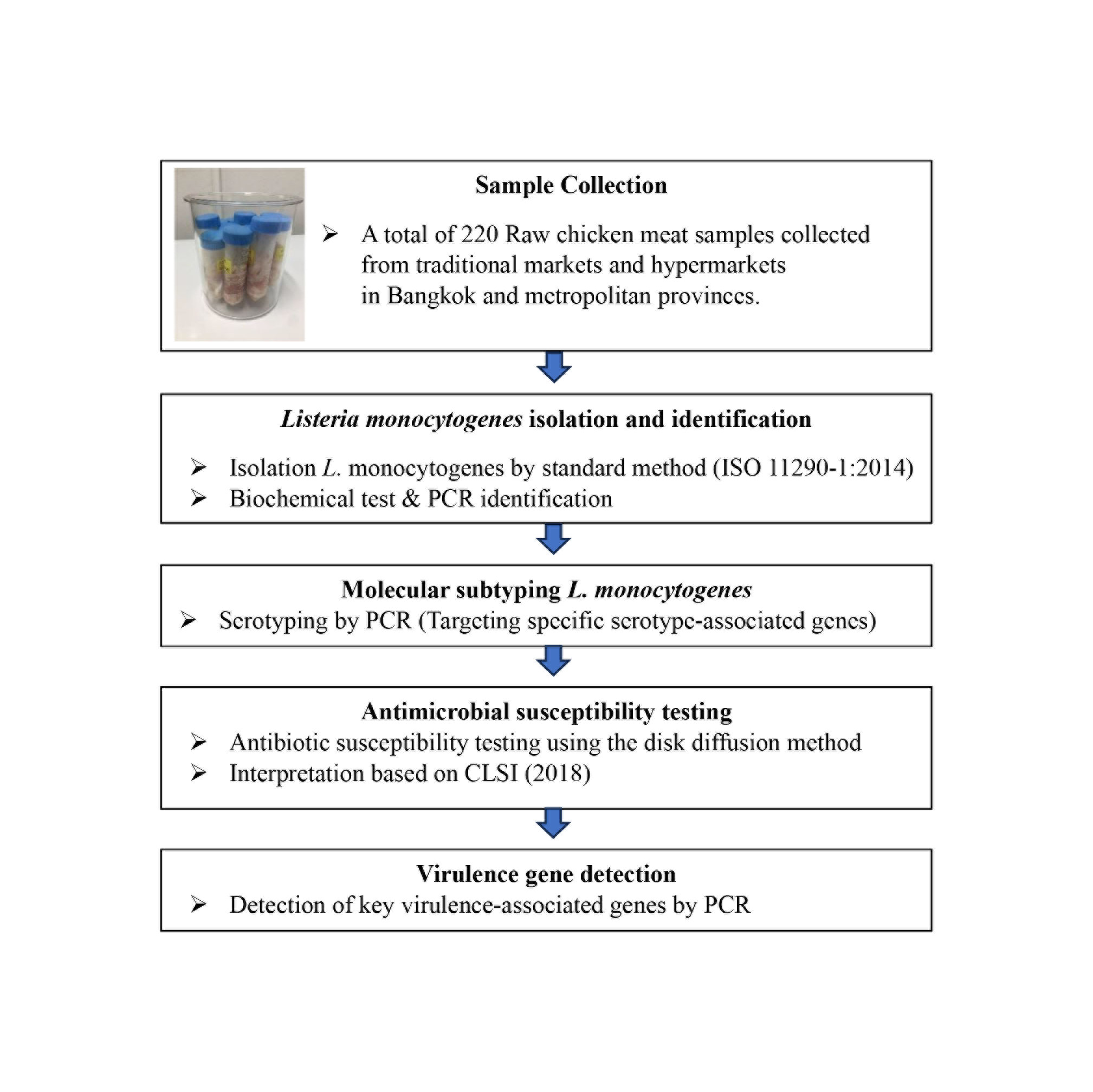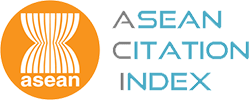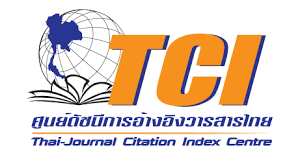Antimicrobial Resistance, Molecular Serotyping and Virulence Profiles of Listeria Monocytogenes Isolated From Raw Chicken Meat in Bangkok and Metropolitan Provinces
Keywords:
Antimicrobial resistance, Chicken meat, Listeria monocytogenes, Molecular serotyping, Virulence geneAbstract
This study investigated the prevalence, antimicrobial resistance, molecular serogroup, and virulence genes of Listeria monocytogenes isolated from raw chicken meat samples collected from traditional markets and hypermarkets in Bangkok and metropolitan provinces, Thailand. A total of 33 L. monocytogenes isolates were recovered from 220 samples (15%), with contamination detected in 13 of 150 samples (8.7%) from traditional markets and 20 of 70 samples (28.6%) from hypermarkets. Molecular serotyping classified 24 isolates (72.7%) into serogroup 1/2b, 3b (Division I) and 9 isolates (27.3%) into serogroup 1/2a, 3a (Division II). Among isolates from traditional markets, 4 belonged to serogroup 1/2b, 3b, while 9 were classified as serogroup 1/2a, 3a. In hypermarkets, serogroup 1/2b, 3b was predominant (18 isolates), whereas 2 isolate belonged to serogroup 1/2a, 3a. Antimicrobial susceptibility testing against 14 antibiotics revealed the highest resistance to clindamycin (25/33, 75.8%), followed by penicillin G (14/33, 42.4%), ampicillin (11/33, 33.3%) and tetracycline (5/33, 15.1%). Multidrug resistance (resistance to ≥ 3 antibiotic classes) was observed in 18.2% of isolates. Molecular characterization revealed all L. monocytogenes isolates (100%) harbored the virulence-associated genes (inlA, inlC, actA, hlyA, and iap). Notably, 97% of the isolates contained the inlJ gene. Additionally, the widespread resistance to common therapeutic agents, along with the presence of serogroups 1/2b, 3b and 1/2a, 3a, raises public health concerns, as serotype 1/2b and 1/2a have been most frequently associated with human listeriosis.Downloads
Download data is not yet available.

Downloads
Published
2025-03-19
How to Cite
Sriyapai, P. ., Chansiri, K. ., Jittaprasatsin, C., & Sriyapai, T. (2025). Antimicrobial Resistance, Molecular Serotyping and Virulence Profiles of Listeria Monocytogenes Isolated From Raw Chicken Meat in Bangkok and Metropolitan Provinces. Science Essence Journal, 41(1), 65–78. Retrieved from https://ejournals.swu.ac.th/index.php/sej/article/view/16643
Issue
Section
Research Article







